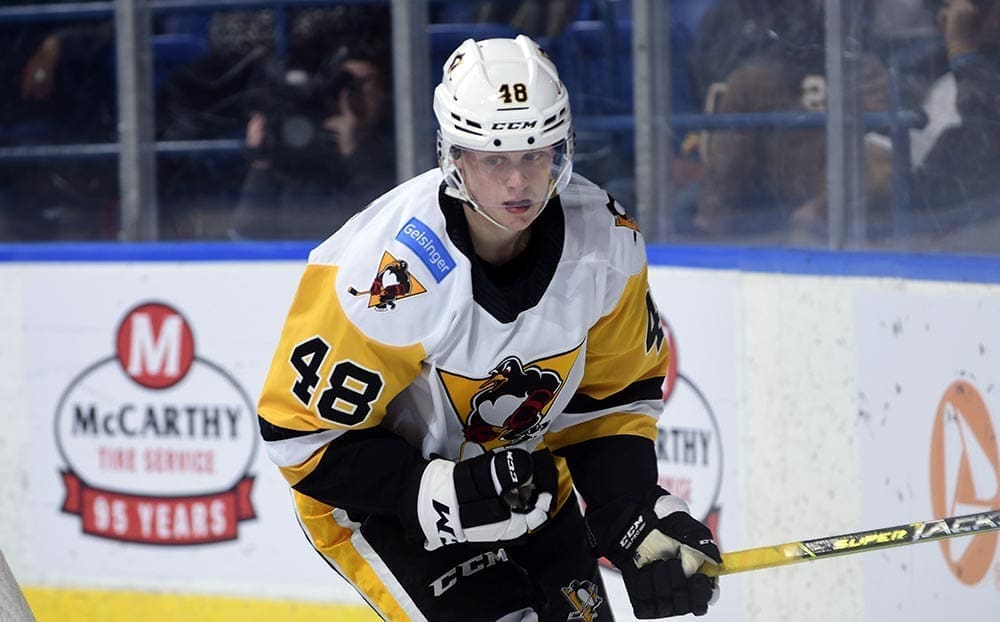Penguins
Molinari: Where Are Penguins’ Good Prospects? It’s a Developing Story

The Pittsburgh Penguins got a new director of player development Friday, when Tom Kostopoulos moved into that role after Scott Young agreed to become Vancouver’s director of player personnel.
It is, of course, far too early to know how Kostopoulos will do in that job but, by at least one metric, he can’t have much less success than Young.
Of the 25 players drafted immediately before and during the time Young oversaw player development, a role he assumed in July, 2017, only three have skated so much as a shift in the NHL.
That trio has logged a total of 20 man-games at this level, only two — count ’em, two — of which have been with the Penguins.
Valtteri Puustinen and Filip Hallander have appeared in a game here, while Calen Addison has played 18 for Minnesota since going to the Wild in the Jason Zucker trade.
It would, however, be neither fair nor accurate to hold Young solely — or even primarily — responsible for the dearth of prospects who have contributed to the parent club in recent years.
After all, the Pittsburgh Penguins have consistently traded away early-round draft picks for the sake of short-term upgrades to their major-league roster. Indeed, Sam Poulin, taken 21st overall in 2019, is their only first-round selection in the past seven drafts.
The professional potential of the players they draft obviously has the greatest significance, because it’s only logical those drafted in the middle and later rounds are less likely to reach the NHL and generally need more time to fully realize their promise.
What’s more, with prospects scattered in leagues across North America and Europe and a player-development staff with only a handful of members, the tutelage players receive on a daily basis from their coaches figures to have far more impact than anything they pick up during occasional contact with anyone from the Penguins.
So no, Scott Young should not be scapegoated for the nominal contributions the Penguins have gotten from their selections in the past five drafts. He’s not the one who traded away most of their first-round draft choices during that time, and he didn’t choose the players they did draft.
No matter how dedicated and capable the members of a development staff are, they can’t be expected to transform players who lack legitimate NHL potential into regular members of the major-league roster.
They can help to exorcise flaws from prospects’ games and prod them to become the best players possible, but aren’t going to infuse prospects with the abilities and intangibles required to reach the NHL if those qualities simply aren’t present.
While expanding the player-development staff couldn’t hurt, the obvious way to get more quality young talent into the Pittsburgh Penguins’ pipeline is to retain more early-round draft choices, and to use them wisely.
Of course, that is at cross-purposes with management’s oft-stated objective to continue trying to assemble a club capable of contending for another Stanley Cup; the Penguins already have traded their second- and third-rounders in this year’s draft, set for July 7-8 in Montreal, and their No. 3 in 2023.
Trouble is, it simply isn’t possible to emphasize enhancing a team’s present and its future at the same time. Try to do both simultaneously, and it’s a safe bet that you won’t really do either.
Bottom line: Given management’s win-now approach for the past decade-and-a-half, the paucity of good young talent in the organization is completely predictable … and has given their player-development staff a near-impossible challenge.
Simply changing the guy who leads that group — especially when the move wasn’t made because of any dissatisfaction with Young’s performance — isn’t going to change the results. That won’t happen until the front office makes prospect procurement more of a priority.












